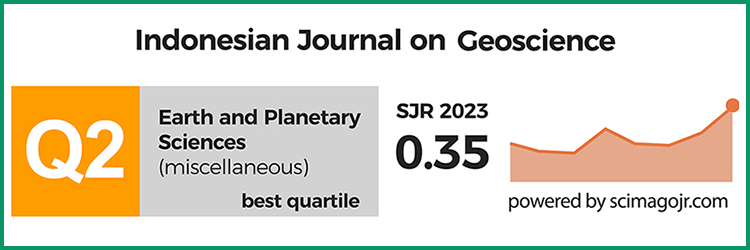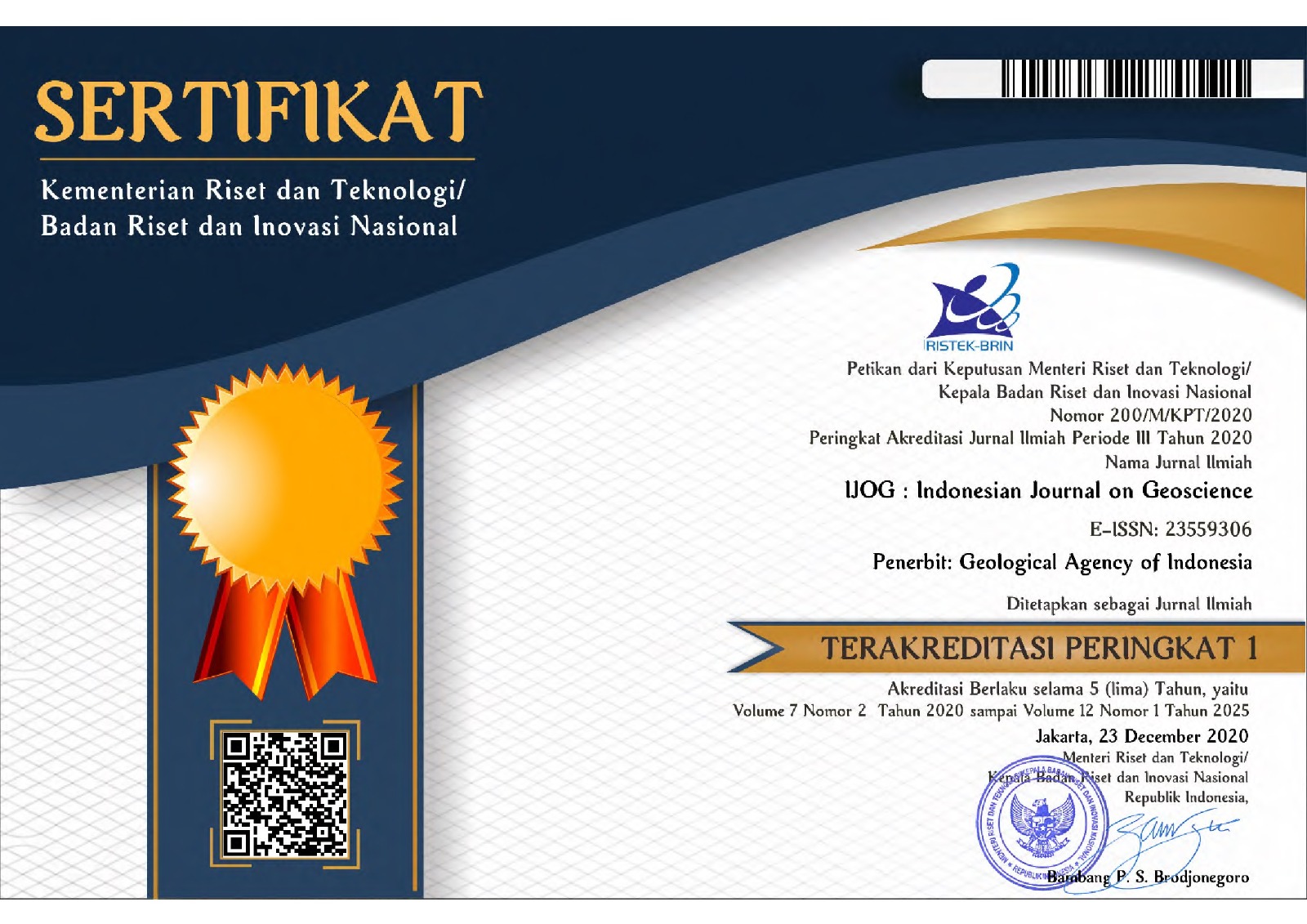Characterizing SO2 Emission Rate, Thermal Anomalies, from Opened and Closed Vent System at Agung, Bromo, and Sinabung Volcanoes in Indonesia
DOI:
https://doi.org/10.17014/ijog.10.2.277-295Abstract
Agung, Bromo, and Sinabung Volcanoes have high volcanic activity over the last decade, and have different eruption characteristics. Hence, it would be fascinating to study the characteristics of their volcanic activity patterns based on SO2 emission rates and thermal anomaly correlated with the seismicity data. The SO2 emission rate measurement was carried out using the Differential Optical Absorption Spectroscopy (DOAS), and calculated based on SO 2 column density, distance of measurement, wind speed, and wind direction. In addition, SO2 emission was detected using Ozone Monitoring Instrument (OMI) images with daily global coverage. Thermal anomaly detection was performed using Advance Spaceborne Thermal Emission and Reflection Radiometer (ASTER) of Thermal Infrared (TIR) subsystem with high spatial resolution (90x90 m). ASTER TIR images were corrected for radiometric and thermal atmospheric. The emissivity and brightness temperature separation algorithm was applied to obtain surface temperature of Agung, Bromo, and Sinabung Volcanoes. All the data were correlated with the seismicity of each volcano. The SO2 emission rates correlate with the magma ascent to the shallow depth in an open system volcano (Bromo Volcano). In the closed-system volcanoes (early phase of Agung and Sinabung), SO2 emission was detected after the transition of closed to open system. Magmatic injection from the reservoir to the shallow depth was detected as thermal anomalies, such as in Agung Volcano. Whereas in Bromo Volcano, the thermal anomaly was insignificant since Bromo Volcano has an explosive eruption at a short period, so the ASTER image could not observe the thermal anomaly on the eruption time. Thermal anomaly pattern in Sinabung Volcano was the manifestation of new magmatic injection to the shallow depth. Therefore, their increase serves as indicators for the increasing magmatic activity prior to the eruptions.
Keywords: SO2 emission rate, thermal anomaly, DOAS, OMI, ASTER, Open Vent, Closed Vent



















